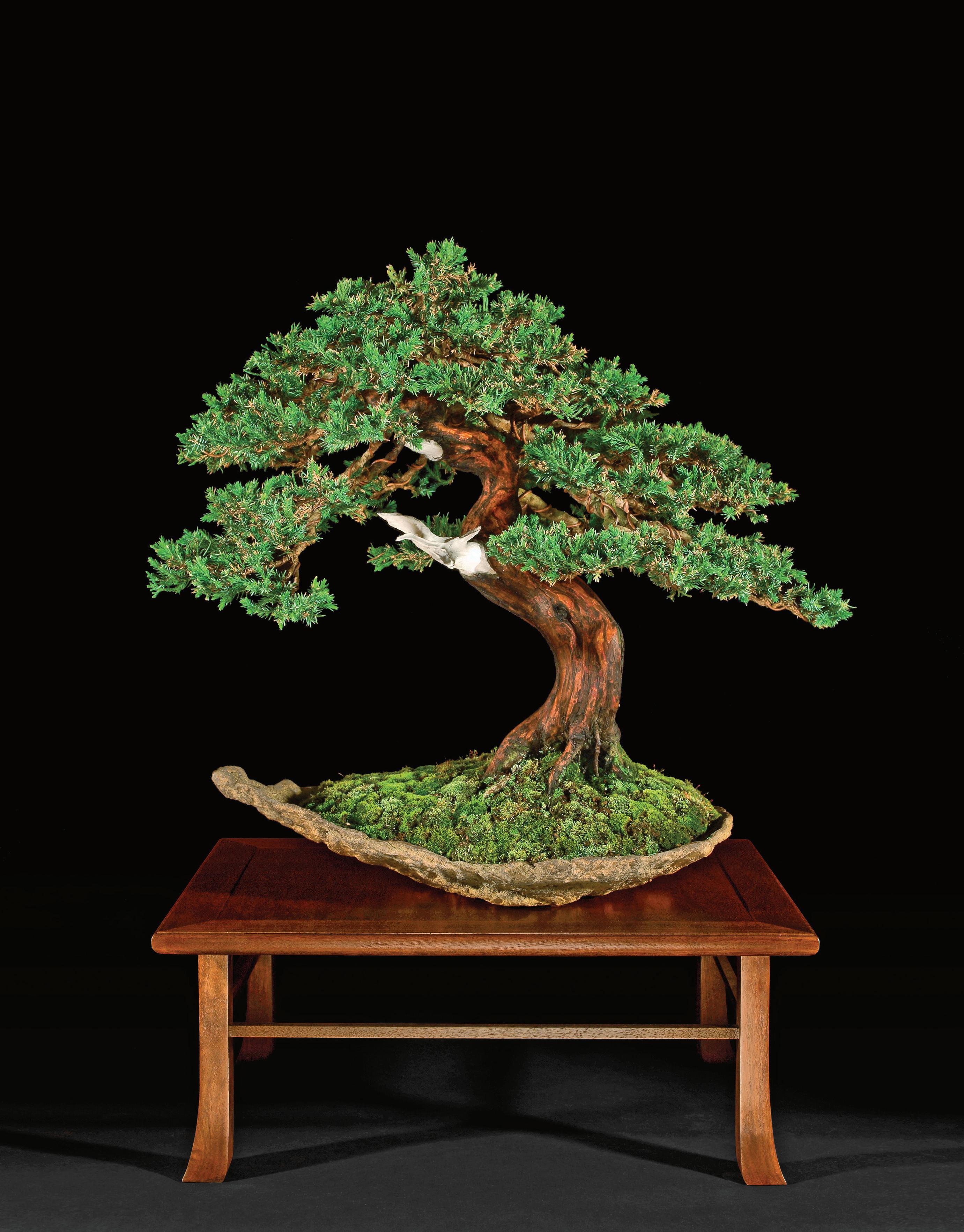
Journal Entries of the Upper Delaware River Region • Serving PA, NJ & NY Late Winter 2023 14thYearAnniversary!





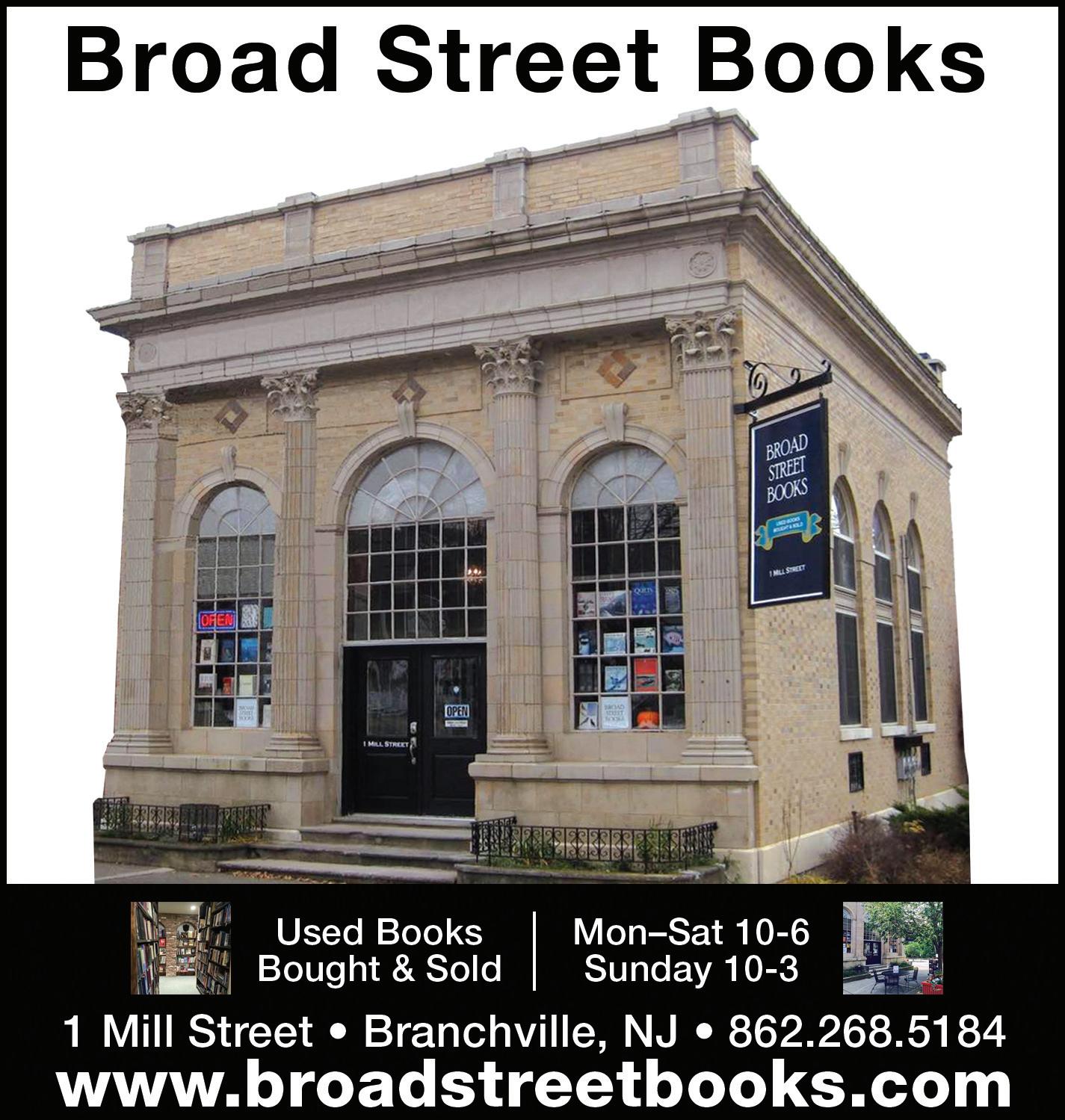
Publisher & Editor
Amy Bridge publisher@milfordjournal.com
Creative Director
Jimmy Sheehan jimmy@milfordjournal.com
Associate Editor
B’Ann Bowman bann_bowman@yahoo.com
Advertising
Amy Bridge amy@milfordjournal.com
Susan Mednick susanmed2@optonline.net
Kimberly Hess Kimberlyhess212@gmail.com

Contributors
Joe Ferry, Alison Porter, Will Voelkel, Rev. Douglas J. Douma, Michelle Oram, Eric Francis, Robert Bowman
Mission
The tri-state upper Delaware River highlands and valleys are a place of rare beauty….
Seeing the region and living in it almost aren’t enough. Such beauty should be captured on canvas or film so that one can truly appreciate it, glimpse it in the quiet of an art gallery or museum, or between the pages of a poetry book or literary sketch.

The Journal Group’s mission is to capture these momentary snapshots of beauty graphically and through the written word. We celebrate our area and the uniqueness of the people who live and work in the tri-state region. From Pike to Wayne and Monroe to Lackawanna Counties in Pennsylvania, upriver to Sullivan County and on to Orange County in New York, and to the headwaters of the Wallkill River and along Sussex County’s rolling hills in New Jersey, with quaint, historic towns and hamlets at the center, the Journal Group opens its doors to our communities, businesses and organizations, to serve as a communicative journal of all that we have to offer for those who live here and for those who love to visit us, too.
Publication Information
The Journal Group publishes The Journal ten times a year and distributes it in eight counties in PA, NJ and NY. We assume no responsibility for unsolicited manuscripts. Contents may not be reproduced in any form without prior written permission. We reserve the right to refuse to print advertisements that we deem inappropriate. All rights reserved.
4
Uniting PA, NJ & NY PO Box 1026 • Milford, PA 18337 • 908.578.3138 www.milfordjournal.com
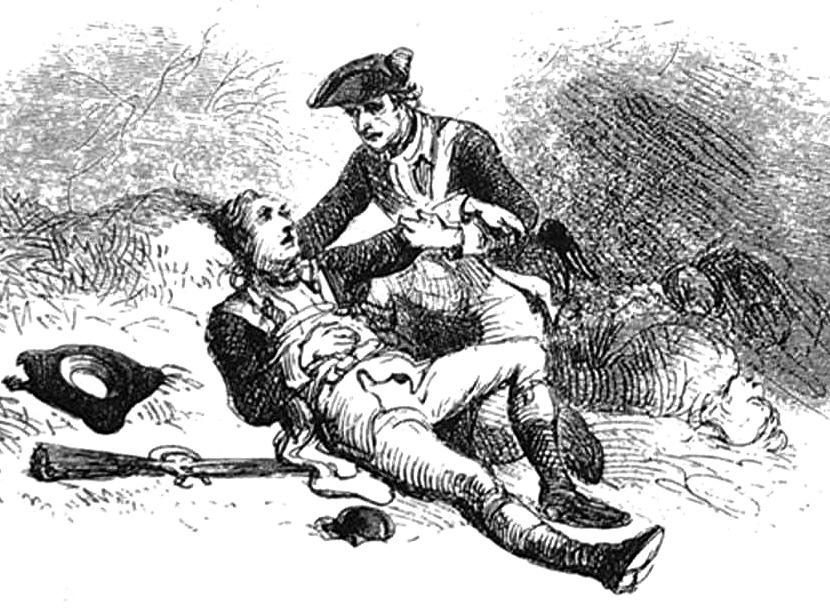



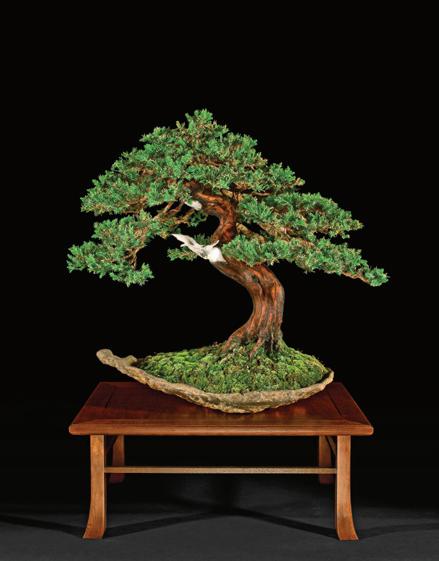
5 6 • journal entry 7 • poem 8 • calendar 31 • signs Late Winter 2023 Contents Cover Line San Jose Juniper, Juniper chinensus Martin Schmalenberg, 2006 American Bonsai Society John Y. Naka Award Winner. Photo by Allan E. John Journal Entries of the Upper Delaware River Region Serving PA, NJ & NY Late Winter 2023 14thYearAnniversary! 10 • art • Sanachie Sound 14 • history • Jumping Borders 18 • food • Mardi Gras Season 23 • life • The Name Game 26 • nature • Martin Schmalenberg
E Pluribus Unum Out of Many, One
Isay this every year on our magazine’s anniversary. And I always mean it. I am so thankful to everyone that has made The Journal a fantastic magazine, a premiere source of knowledge and entertainment throughout the tristate region, and just plain fun to read.
This issue marks year 14 for The Journal. The wealth of interesting topics to write about in our communities continues to amaze me.
Perhaps it’s the aftereffect of the pandemic, or could it be just because it is so beautiful up here in our corner of the world? Maybe it’s the friendly people, less traffic, wide-open spaces, and a place where you actually can stargaze at night? Whatever the reason, we’ve seen an influx of newcomers settling in lately.
I have been impressed, and watch with enthusiasm, as these folks start new organizations, new businesses, and new lives in our communities, infusing our towns with vital energy while fulfilling their own hopes and dreams.
And equally impressive are those who continue to serve our communities, year after year, setting an excellent example in doing the good work, well done.
I am hoping that all will support our newly arrived community members, as they, in turn, support us by bringing to us shops and services that will add to the amenities that we already offer, making this a well-rounded place to live.
Here’s to flourishing in the coming year.
Come out and see the new businesses that have opened in our towns, villages, hamlets. You’ll be in for a surprise! And while you’re out there, pay a visit to the established businesses as well. The charm of a small town lies in walking into a place where everybody knows your name.
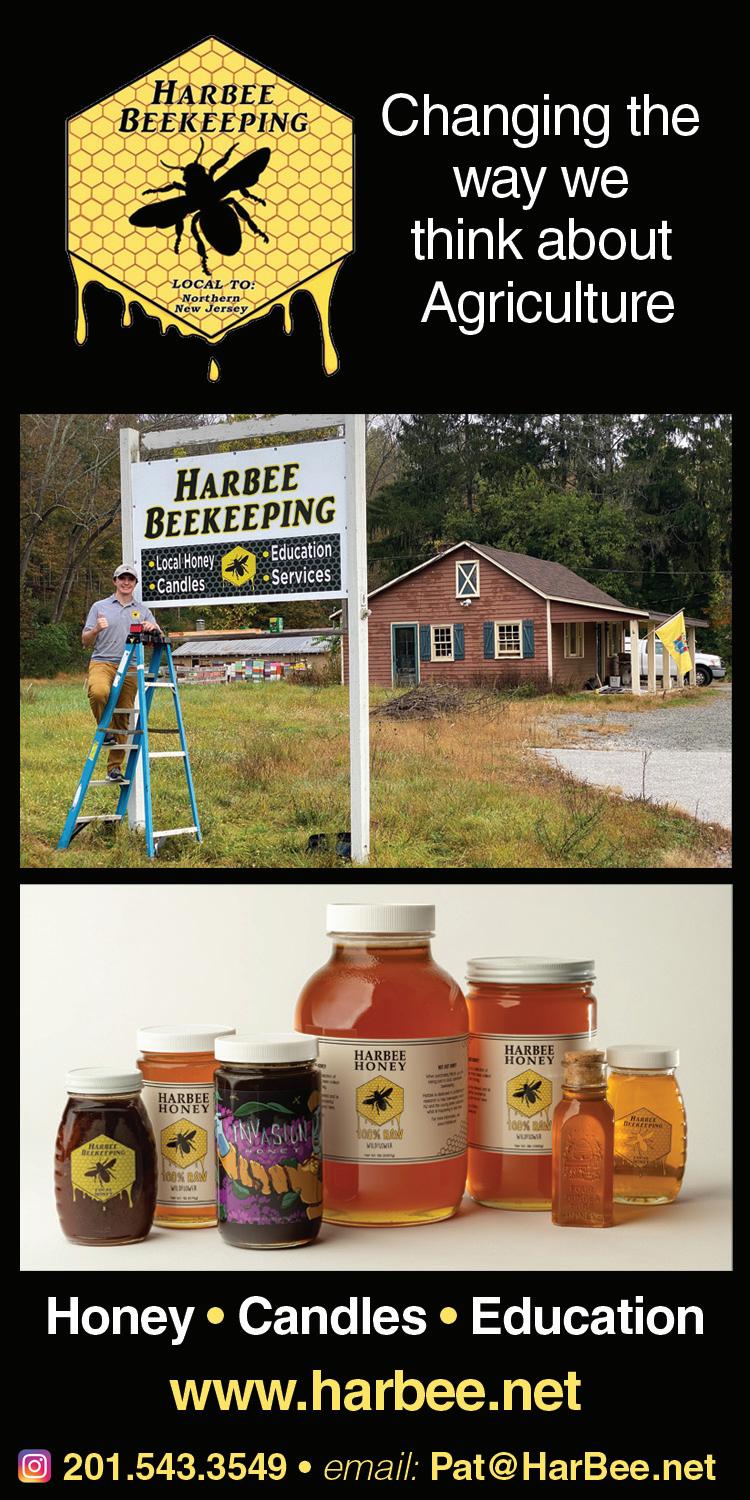
Happy Fourteenth!

6 Journal Entry
Amy
Golden Years
Hypnotic tinsel waters
Dance with the flirting sun
Red winged blackbirds add percussion—snare drum transporting me to a magical place where pixie dust pollen blankets newts and newly hatched treasures in pearly-shell gates

Snails play peek-a-boo Blue gills nibble at my feet looking for something to eat tickle and alarm but no harm
Large-mouth bass ready to spawn fool around jump and splash disrupt the cauldron where daydreams are stirred by a mirage of mallard ducks
Buzzing bees and wands of neons cast a spell of iridescent stillness as my mind drifts on the backs of turtles to a simpler time in my youth now revisited in my golden age wonder
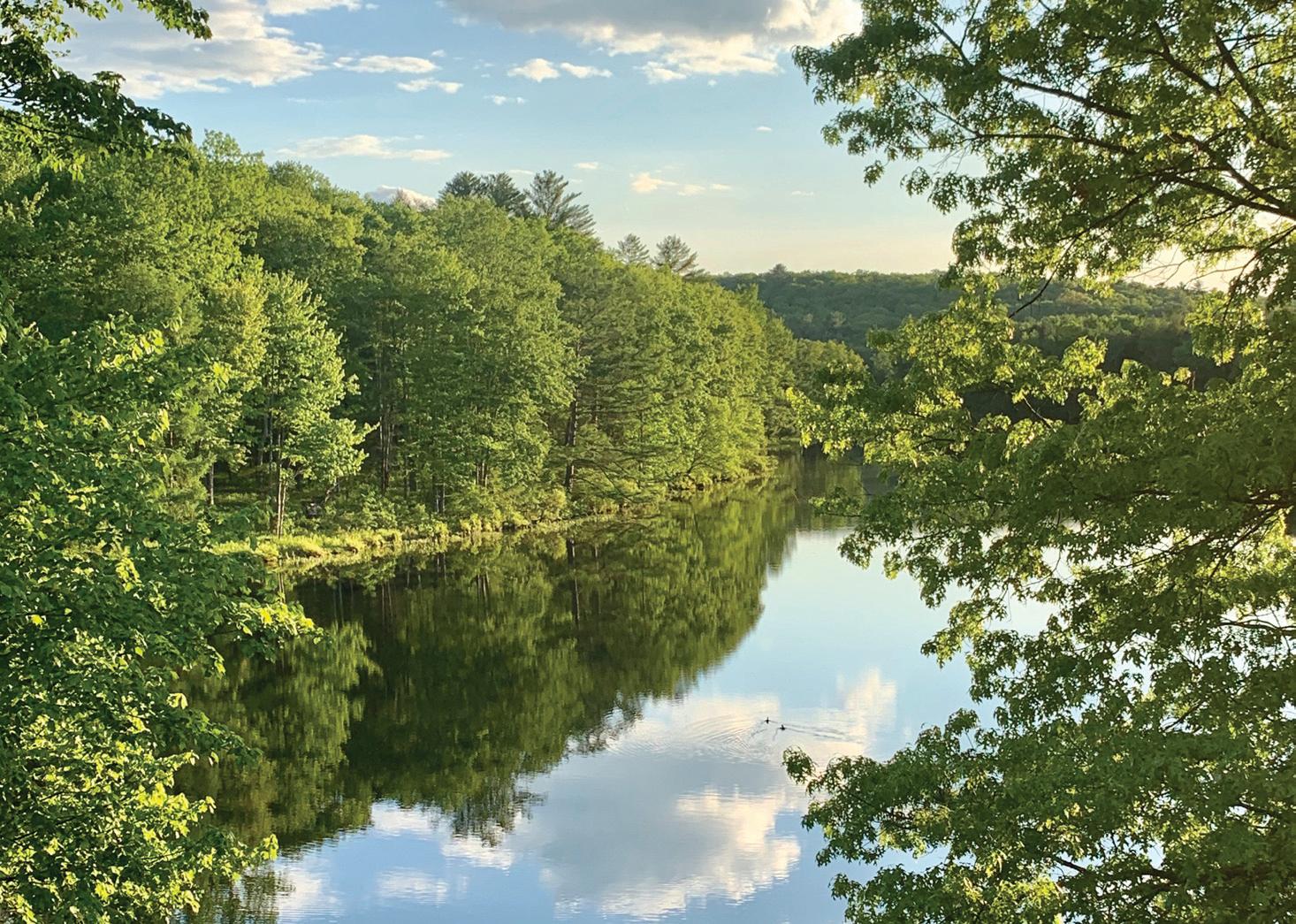 -Michelle Oram
-Michelle Oram
7 Poem
Photo by Michelle Oram
March 3rd–5th, 10th–12th
Fridays 8 p.m. Saturdays 3 & 8 p.m. Sundays 3 p.m.
The Hunchback of Notre Dame. Performing Arts Center, Sussex County Community College, Newton, NJ. Presented by Drama Geek Studios, in-residence community theatre. Info: 973.512.8251, www. dramageekstudios.com.
March 4th & 5th
Saturday & Sunday 9 a.m.
.............................
Sugar Shack Scramble. PEEC, Dingmans Ferry, PA. Hike to “Two Saps” Sugar Shack and enjoy hot cocoa and pancakes with fresh maple syrup. $15. Info: 570.828.2319, www.peec.org.
March 8th
Wednesday 4–5 p.m.
.............................
The Story of Rachel Carlson. Van Scott Nature Reserve, Beach Lake, PA. Learn about Carlson’s role in eagle conservation and receive a copy of her book, Silent Spring. Hosted by Delaware Highlands Conservancy. Registration required. $10/members, $15/non-members. Info: 570.226.3164, dela warehighlands.org.
March 11th
Saturday 10 a.m.
.............................
Snowball’s Chance: Mtn Bike Poker Ride & Walk. Up Front Gallery, Port Jervis, NY. Benefits Watershed Trails of Port Jervis. Info: 520.548.9727, Facebook: SnowBall’s Chance.
6–10 p.m.
Rock the Clock Dinner Dance. Barn at Hillside Park, Newton, NJ. Fundraiser benefiting the Hampton Township Educational Foundation. $50. Music by Snake Oil Willie. Tickets: htefnj@gmail.com, tinyurl. com/HTEFDinner.
March 17th
Friday 7 p.m.
Alexander Markov: Classical and Rock Violinist. Dingman-Delaware Middle School Auditorium, Dingmans Ferry, PA. Free. Hosted by Kindred Spirit Arts Program. Info: 570.409.1269, kindredspiritsarts.org.
March 18th
Saturday 11 a.m.
.............................
Sussex County St. Patrick’s Day Parade. Newton, NJ. Floats, animals, bands, fire trucks. Sponsored by the Newton Fire Department. Info: stpatricksparade@newton firedept.org.
11:30 a.m.–1:30 p.m.
Cornelia Bryce Pinchot: Activist for Social
Change. Pike County Library, Milford, PA. Presented by Grey Towers Heritage Association. $15–$20. Tickets required. Info: 570.296.9630, www.greytowers.org.
3 p.m.
Family Concert: The American Sound. Sparta High School, Sparta, NJ. Music of Bernstein, Copland, and William Grant Still. Featuring winner of the 2022-23 Karen Pinoci Young Artists Competition. Info: 973.579.6465, newsussexsymphony.org.
5–10 p.m.
.............................
Chamber’s Choice Gala. Eisenhower Hall, West Point, NY. Dinner, silent auction, dancing. $300. Hosted by the Orange County Chamber of Commerce. Info: or angeny.com.
March 19th
Sunday 3–5 p.m.
.............................
Opening Reception: Traditional Basketry & Beyond. Peters Valley School of Craft, Layton, NJ. Steven R. Carty. Exhibit: March 19th–April 23rd. Info: 973.948.5200, www. petersvalleygallery.org.
March 23rd
Thursday 5:30 p.m.
Celebration of Charity and Caritas Awards Dinner. Kartrite Resort, Monticello, NY. Includes silent auction. $150. Benefits local catholic charities programs. Hosted by Catholic Charities of Orange, Sullivan, and Ulster. Info/tickets: 845.294.5124, cccsos.org.
March 24th
Friday 7 p.m.
.............................
Hanna Q Dance Company Winter Performance Series. St. Patrick’s Event Hall, Milford, PA. $40. Supports Hanna Q Dance Company. Info: www.hannaqdancecom pany.com.
March 26th
Sunday 4–7 p.m. .............................
Fish & Chips Dinner. Shepherd of the Hills Lutheran Church, Sparta, NJ. Proceeds will support the outreach ministry of Shepherd of the Hills. Takeout available 4:30–6:30 p.m. Adults $20-$22, Children $12-$14. Info/tickets: 973.224.0986.
March 29th
Wednesday 6:00 p.m. .............................
Awards Gala Dinner. Perona Farms, Andover, NJ. Reception, live music, dinner, auction & raffles. Supports services for individuals with developmental disabilities. Info: 973.383.7442, www.scarcfoundation.org.
April 14th–16th
Friday–Sunday Noon–2 p.m. & 3–5 p.m. .............................
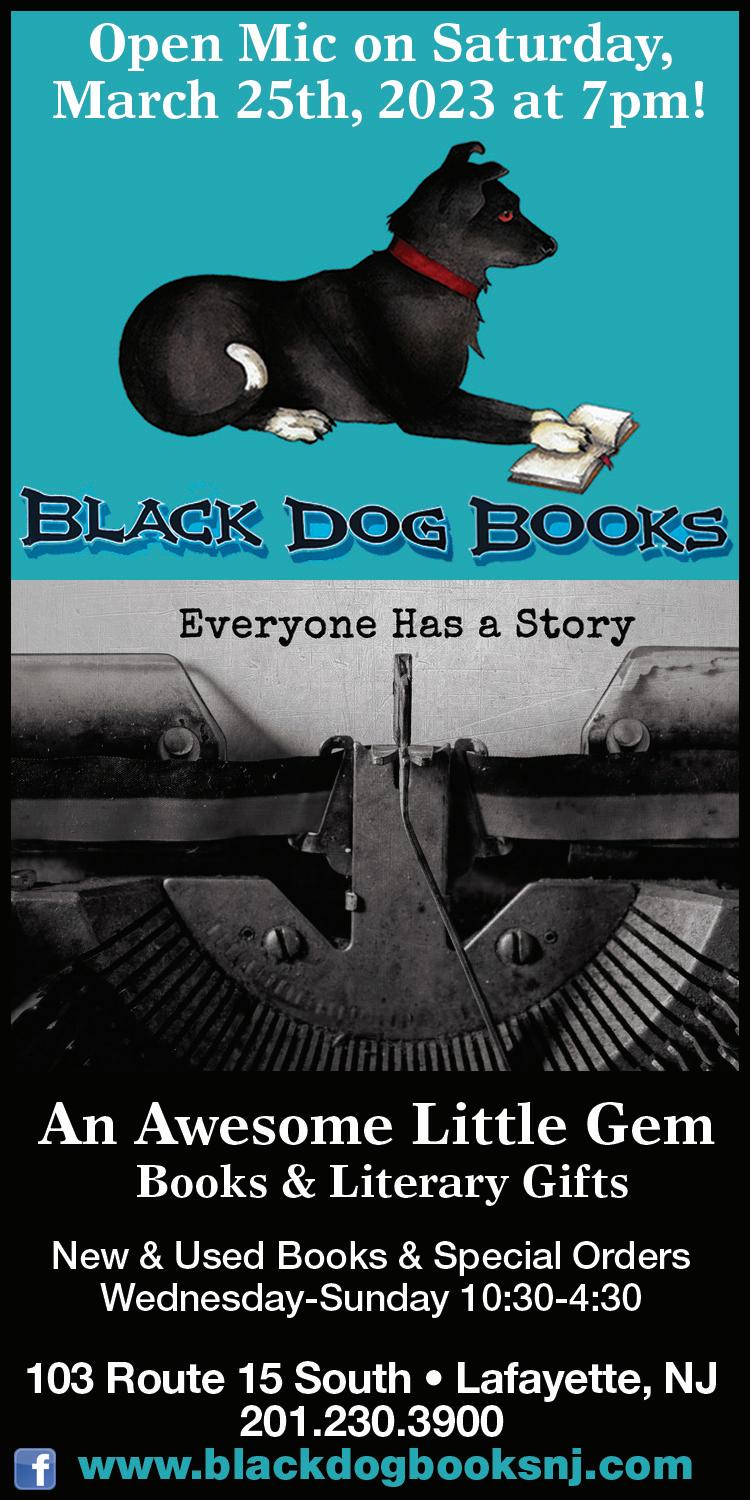
Wally Wine Fest. Silver Birches, Hawley,

8
Calendar
PA. $60. Sample domestic & international wines. Food & gift vendors. Silent auction benefits Lake Wallenpaupack Fireworks. Info: 570.226.4388, wallywinefest.com.

April 16th
Sunday 4–6 p.m.
Thinking Inside the Box. Columns Museum, Milford, PA. Firsthand account of the three women in the presidential box the night Lincoln was killed. Sponsored by Grey Towers Heritage Association. $20–$25. Info: 570.296.8126.
April 21st
Friday 6 p.m.
Tricky Tray. Frankford Township Fire Department, Frankford, NJ. Drawing starts at 8 p.m. Benefits the fire department: Info: 973.271.6387, 973.768.4521.
April 24th
Monday 6–9 p.m.
Taste of Vernon. Heaven Hill Farm, Vernon, NJ. Sample food from area chefs; music by local musicians. Benefits the Vernon Coalition. Info: 973.764.0764, www.vernon chamber.com.
April 27th
Thursday
70th Anniversary Celebration. Check the website for location & time. Hosted by the Sussex County Bird Club. Dinner, auction & more. Info: www.sussexcountybirdclub.org.
April 29th
Saturday 11 a.m.–3 p.m.
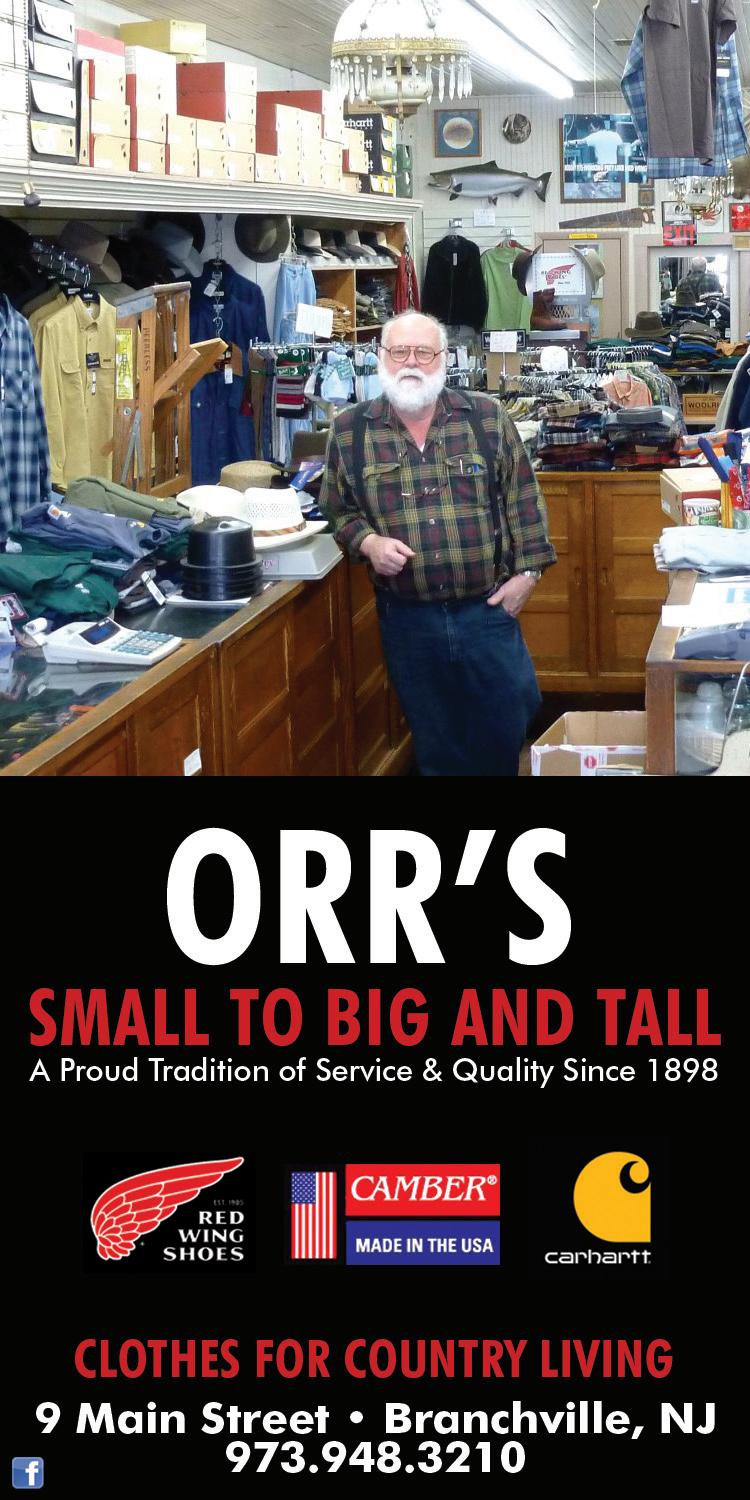
Spring Fling. Wurtsboro, NY. Crafts, bird show, duck race & more. Sponsored by Wurtsboro Board of Trade. Info: www. wurtsboro.org.
11 a.m.–4 p.m.
Earth Day Festival. PEEC, Dingmans Ferry, PA. $5/car. Hikes, crafts, food, music & more. Info: 570.828.2319, www.peec.org.
5:30–9:00 p.m.
Foods of the Delaware Highlands Dinner. The Inn at Woodloch, Hawley, PA. $185. Raffles, live & silent auctions. Benefits Delaware Highlands Conservancy. Info: 570.226.3164, delawarehighlands.org.
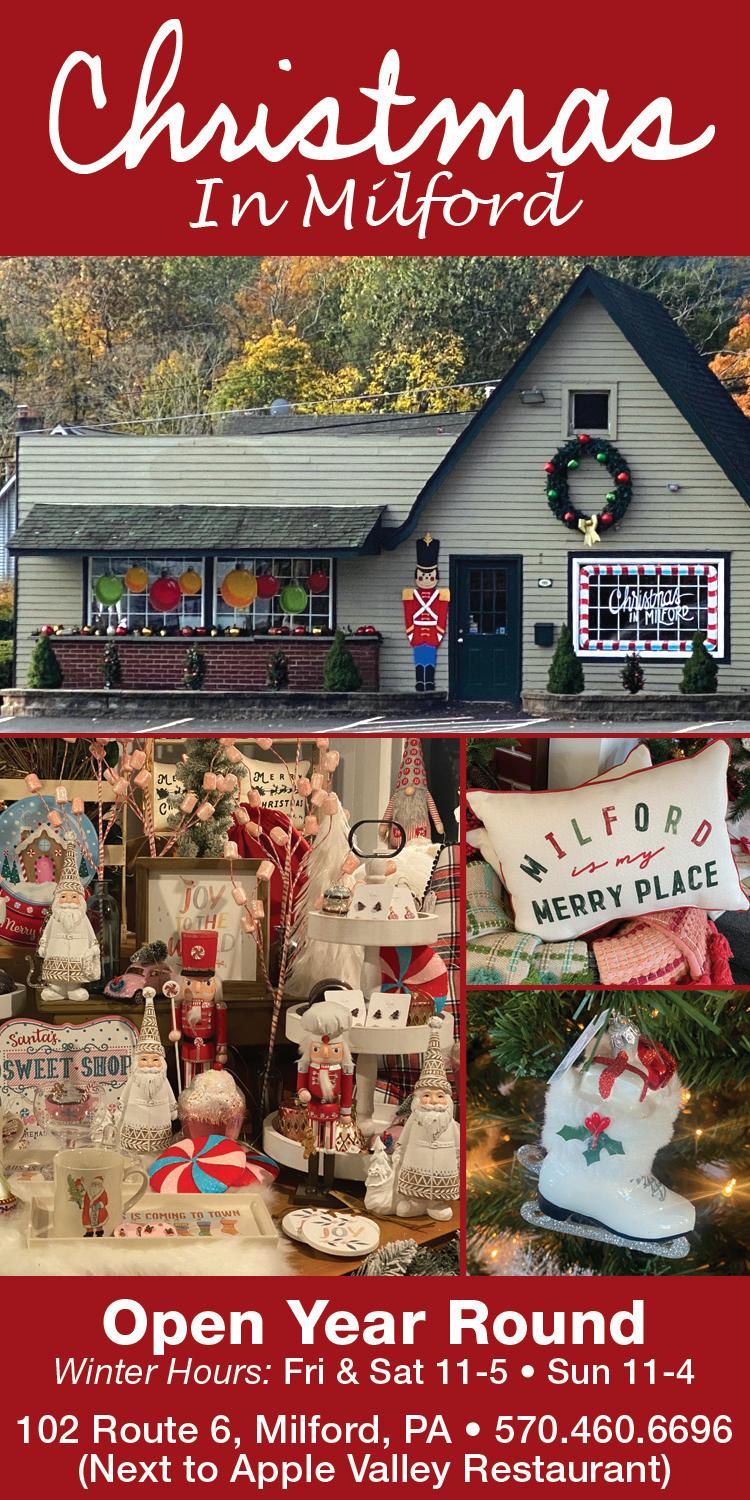
April 30th
Sunday 2–3 p.m.
Frederick Cook: Arctic Explorer. Time and the Valleys Museum, Grahamsville, NY. Illustrated lecture about Cook’s expeditions 1897–1908. Members/free, non-members/$5. Info: 845.985.7700, www.scnyhis tory.org

9
.............................
.............................
.............................


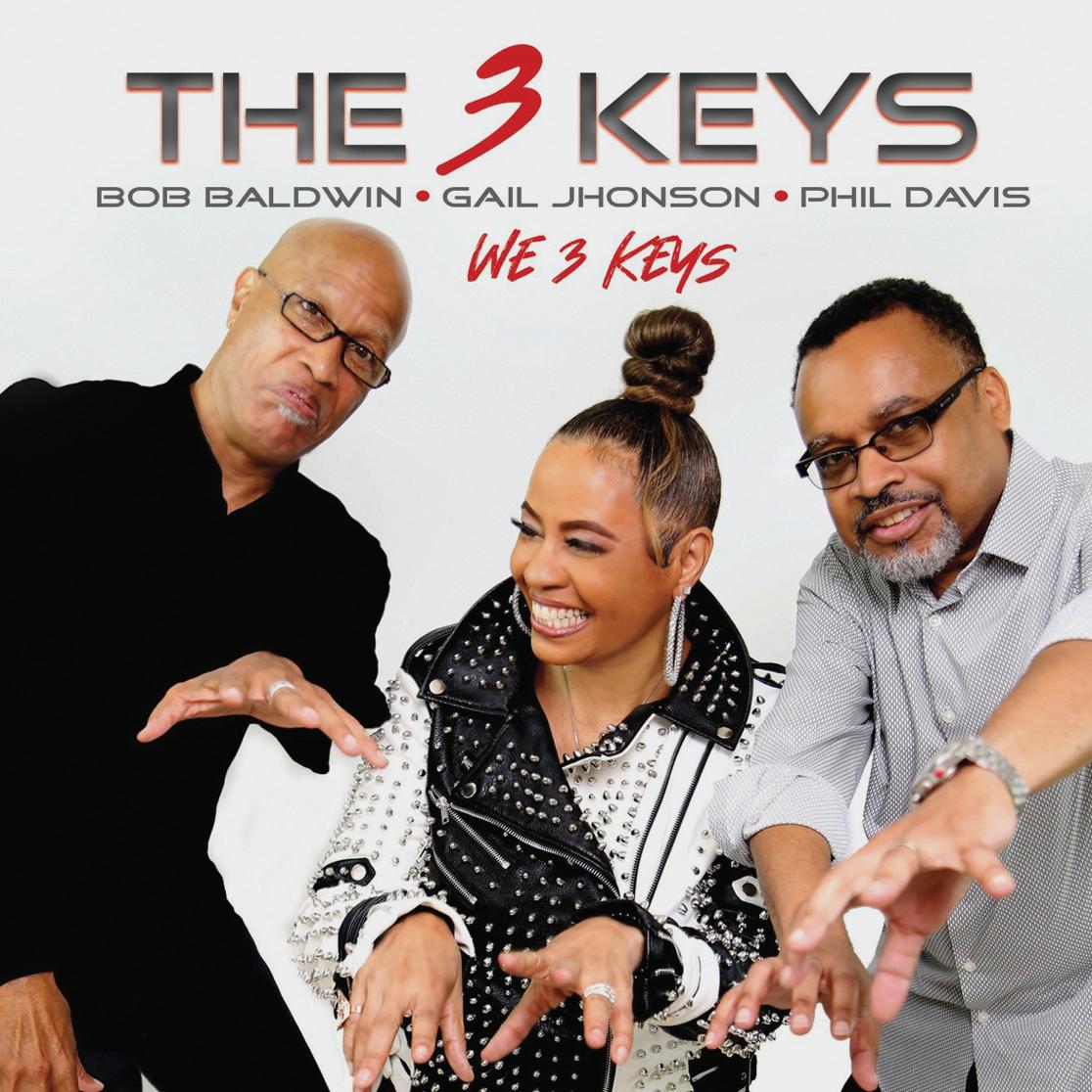



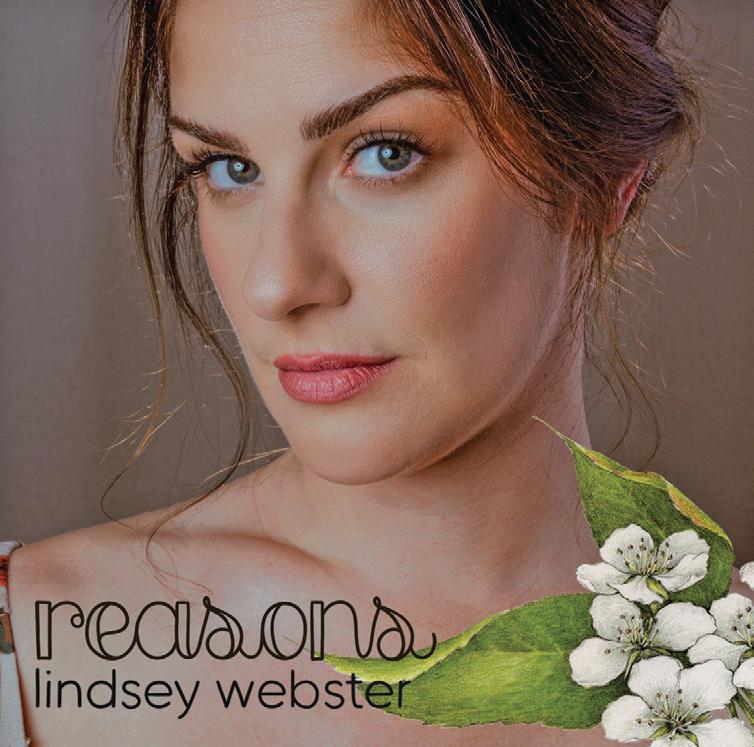

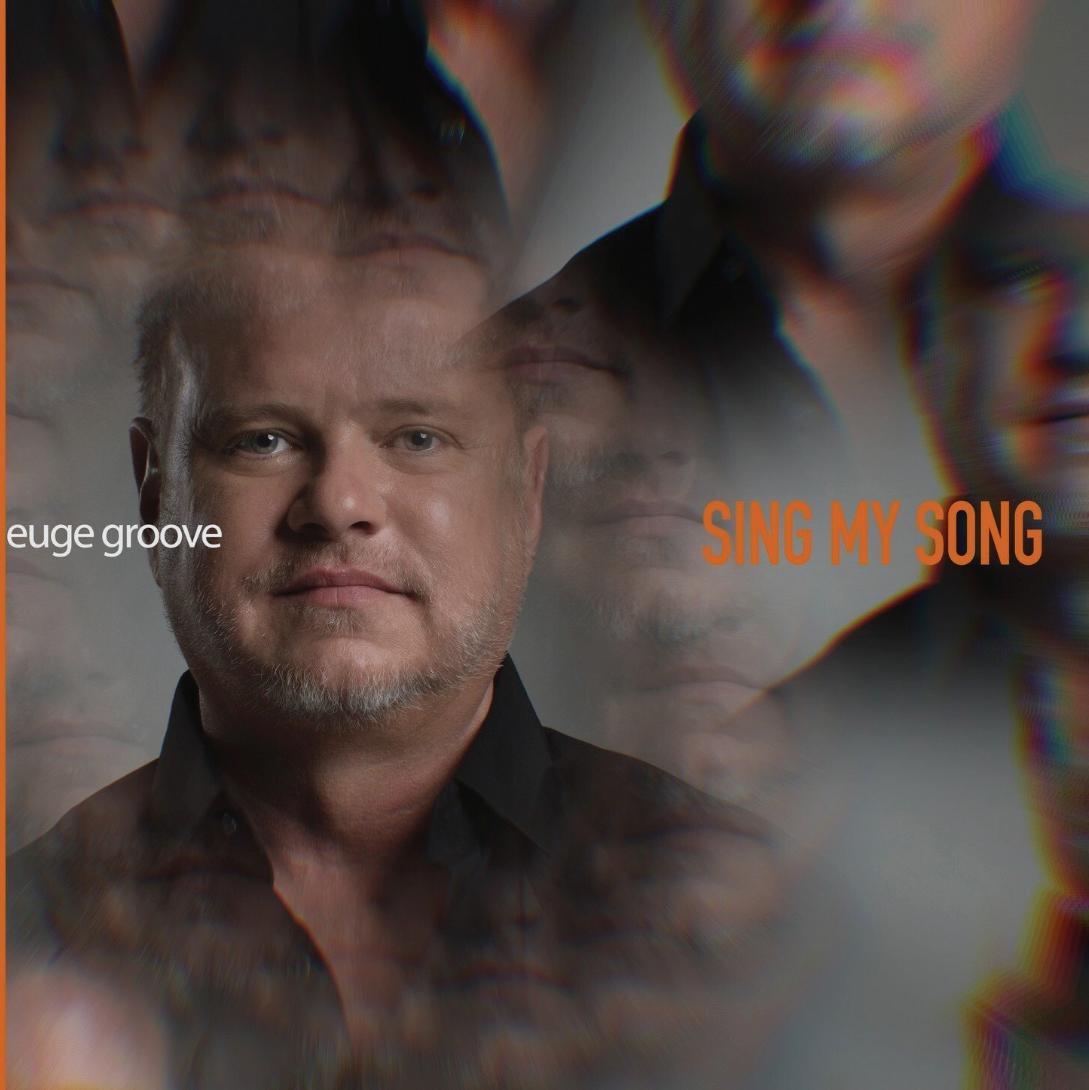


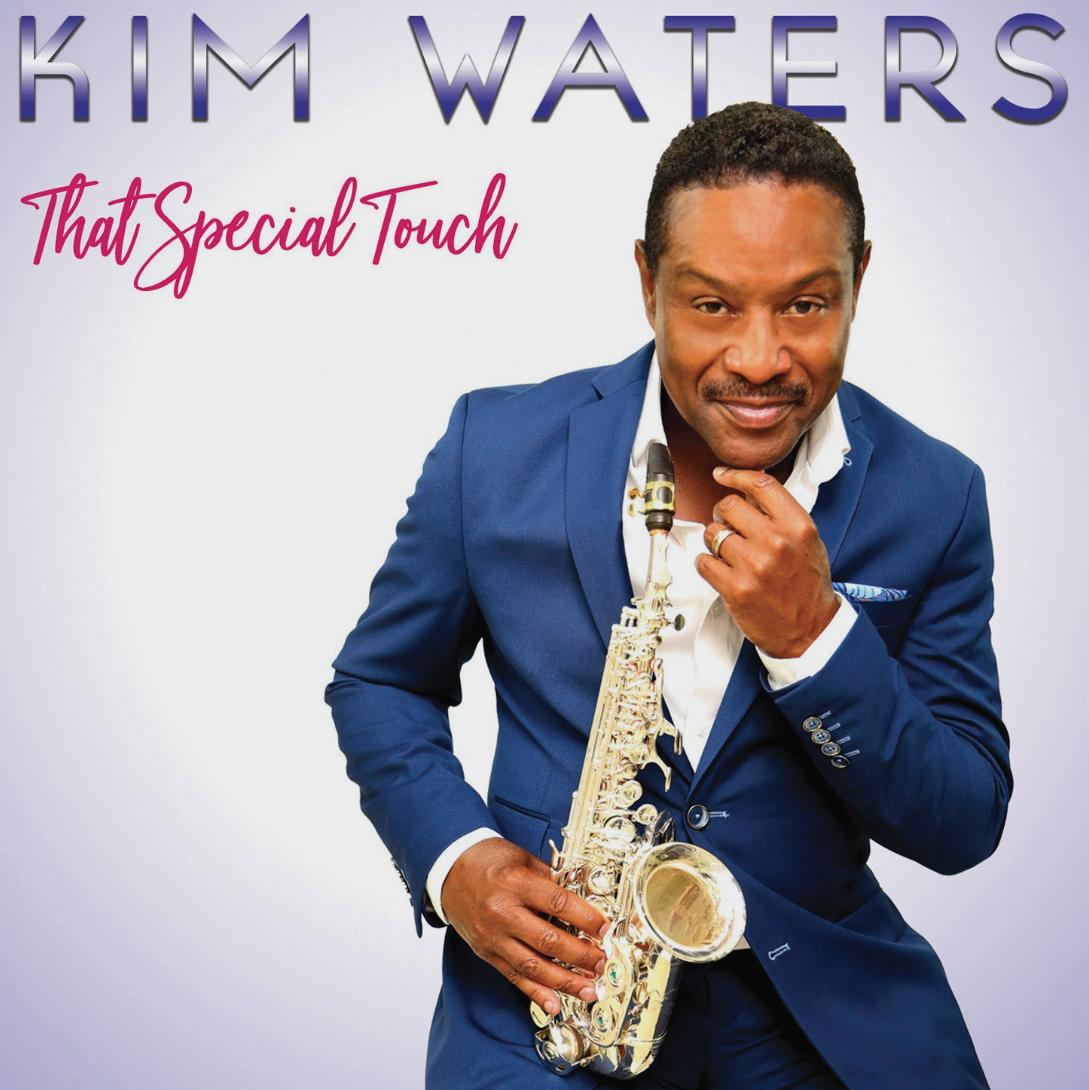
10
An Old School Record Label
Since its formation in 1976, Shanachie (pronounced SHANA kee) has been a steadfastly independent record company. The label, which started in the Bronx releasing Irish music (a favorite with the company’s owner), has made its home in Newton, New Jersey, for the past 30-plus years and remains one of the most important, viable, and famous record labels in the world.
There is a homespun atmosphere in the Shanachie offices— posters dating back over one hundred years adorn the walls, antiques and collectibles everywhere. And the original plank floors are still in use. Everyone in the office is always willing to help: label owner, Richard Nevins; General Manager, Randall Grass; and Director of Jazz, Danny Weiss.
I have worked at Shanachie Entertainment Corporation since 1991, as a producer and A&R (Artists and Repertoire) representative. Looking back on the nearly-fifty-year history of Shanachie, I found a wealth of records released by the likes of reggae star Rita Marley (widow of the legendary Bob Marley), Nigerian musician and bandleader Fela Anikulapo-Kuti, the amazing African vocal group Ladysmith Black Mumbazo, and hundreds more.
It stuns me to think that a record label can be so productive and prolific and yet remain independent. The label has no connection to major companies, no worldwide corporations such as SONY Music.
The label also does not fence itself in by releasing music from one and only one genre. Rather, its staff keeps an open mind, judging the music not the genre.
Randall Grass explained, “Shanachie, over the years, has been a significant player in many genres.” He added, “Shanachie has won numerous Grammy Awards including for Bunny Wailer Sings Bob Marley. The Chieftains In China was named one of the Top 100 Greatest Albums by Rolling Stone Magazine.” And Ronnie Wood of the Rolling Stones lists the song he sang, “Chain of Fools,” on the Shanachie release, Back To The Streets, as one of his top 10 favorite blues tracks.
Today, the Shanachie catalog of music includes Irish, country & western, jazz, reggae, world, folk, gospel, rock, blues, Americana, singer/songwriter, and R&B genres, featuring artists such as jazz great Randy Brecker, bluesman Michael Bloomfield, jazz vocalist Angela Bofill, reggae legend Augustus Pablo, and saxophonist extraordinaire Leo P.

There are distinct differences between major and independent (or indie) labels. The major labels are global, and they have far more money with which to work. They have offices in virtually all foreign markets, making it easier to work within those markets. Independents are generally not funded as well, and as a result, they have no chance at signing top selling artists. They have to develop unknown but promising artists. According to medium.com, “Indie labels have closer relationships with their artists. The odds of closer communication are greater than they are with a major label.”
Furthermore, today artists are free to set up their own independent music companies and release their own work without the help of either an independent label or a major label. At most, the independent artists would need to hire a record promoter to help get their music to a broader market. The
11 By
Record covers courtesy of Shanachie Entertainment Art
Joe Ferry
Continued on next page
basic tools are as far away as one’s laptop. Artists run their own independent music companies from home. But there is a downside—promotion is a full-time job, and most artists find it difficult to wear the hats of both record executives and recording artists.
Shanachie, however, is accessible to their artists and at the same time fully staffed with promoters and marketing people who have the contacts to put a record over the top.
Another advantage artists have when working with indie labels such as Shanachie is publishing. Publishing refers to the rights to the music that artists produce; it’s the intellectual property. At indie labels, artists can keep their publishing rights. At major labels, artists generally have to surrender at least a part of their publishing rights to the record company.
Shanachie has a strict method for choosing artists to sign. Randall Grass noted, “First and foremost, the music must be high quality. It must be unique, and the artist must have a viable fan base.” Given the glut of artists trying to get noticed out there, these are extremely difficult standards to hold. The internet makes it easy for anyone to upload music and music videos of varying quality. Looking for that special someone is like trying to find a needle in a haystack.
One of the ways that I, as the current A&R director at Shanachie, seek out viable artists is by searching music festival rosters. Very often, I find artists that fit the bill and are worthy of a second look. From time to time, we will sign one of these. Saxophonist Leo P is a good example. Leo gained attention playing in the NYC subway for tips. From there, he began to receive wider acclaim and has since toured the world extensively.
The label gives interns a chance to garner real world experience by working with its artists. While the label does not generally accept unsolicited submissions, it is open to meeting new people and bands that come from the usual channels: attorneys, managers, producers, etc.
In this 21st century digital world and the global economy that goes with it, it is a breath of fresh air to know that there are companies such as Shanachie Entertainment Corporation still doing things old school. While the company has kept up with the times, the heart and soul of Shanachie are firmly rooted in the early 20th century.
Introducing Leo P
He plays a wicked baritone sax, ripping blazing jazz riffs, dancing as he does so. His name is Leo P, and he is one of the hottest saxophonists on the scene today. I first found out about this amazing young talent in the subway, where he was busking, playing for tips. I’d never seen anything like this before. He was swinging, filling the dank subway air with the most astounding jazz sax licks while doing the latest dance steps.
Leo P hails from Pittsburgh, PA. Shanachie Entertainment just released his anticipated solo debut, Comin’ Up Aces, a lively jazz-funk set that joins him with special guests Richard Elliot (Tower Of Power, Yellowjackets), Stanton Moore (Galactic) and Eric “Benny” Bloom (Lettuce). While the album features mostly originals, he pays homage to a few of his musical heroes such as Eddie Harris, Charles Mingus, Earth, Wind & Fire, and Maceo Parker. Leo P was also recently crowned Baritone Saxophonist of the Year in DownBeat magazine’s new Reader's Poll.
His band, Too Many Zooz, has toured the world, and their music has been featured in several TV advertisements, including KFC’s Grab and Go commercial.
Leo P declares, “I want to bring the party back to jazz. I want to make people dance. I want to wear badass suits and look cool as hell and present something special to people that they will always remember!”

12 Art Continued












13
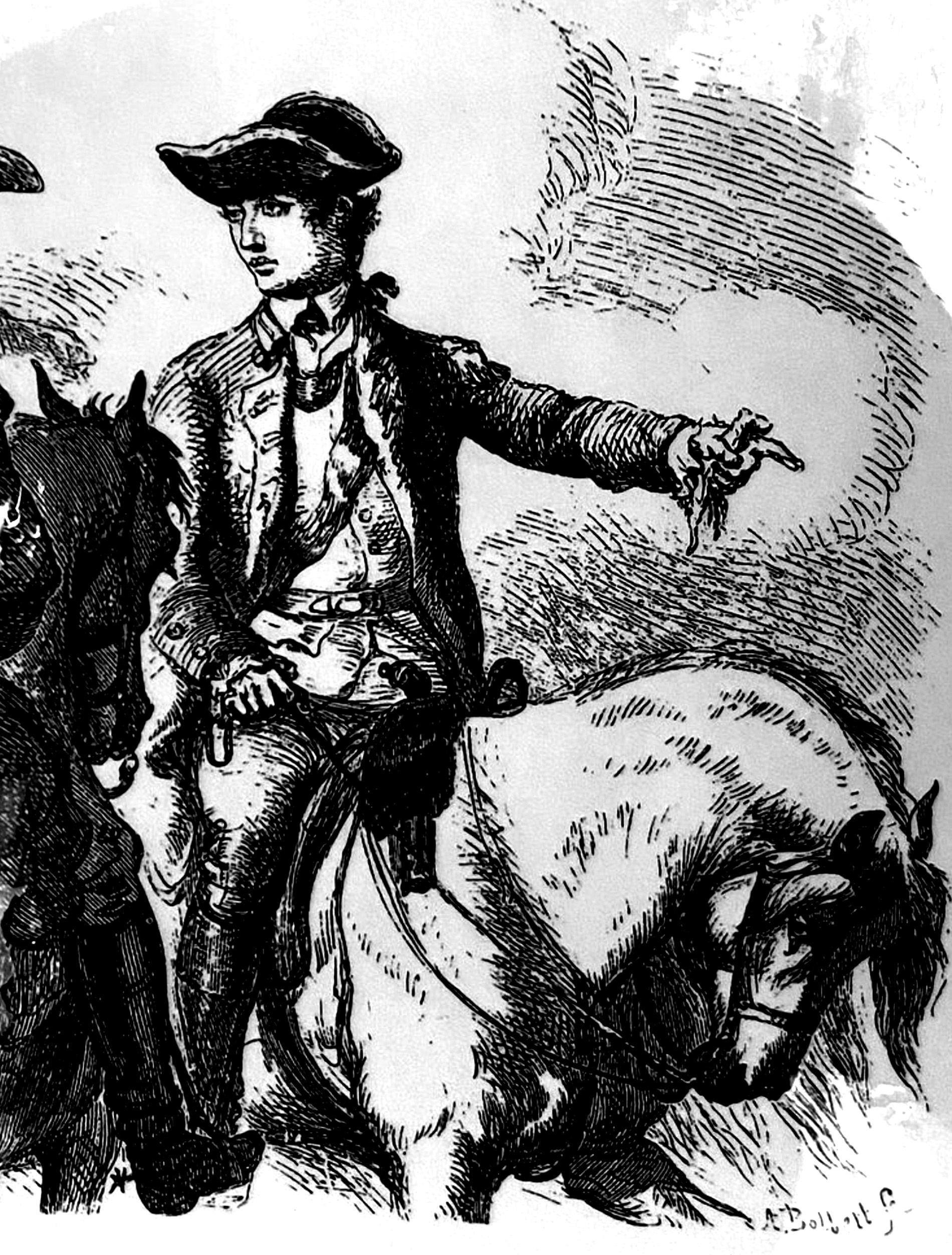
14
By Rev. Douglas J. Douma
Major Meeker’s Meeting House and the Original Westtown
Digging into the archives at the Minisink Museum a year or so ago, I found an intriguing reference that sent me down an interesting path of research. In that research, I found that the placename “Westtown” has jumped the border.
Today’s hamlet of Westtown, NY, is situated some three or four miles north of the New Jersey border. So, I was quite surprised when I found in the archives a note by former Minisink town historian Doris Cole saying, “Historians have now agreed that the vicinity of Westtown prior to 1800 was localized near the N.J. border, on the lower road.” And a second note, also by Cole, reading, “Early records seem to point to the fact that our church here was first located near the New Jersey border on the lower road.” While she specified that Westtown was near the border, she didn’t say on which side of the border the place resided.
Many will know that the colonies of New York and New Jersey long had a border conflict that was not resolved until King George set the official line in 1769. Prior to that time, the New Jersey claim line extended on an angle north of the existing border. So, there are quite a few places along the border that once considered themselves to be in New Jersey only to be told later that they belonged to New York.
But there is something different about Westtown. It was some decades after the border line was settled that this placename moved.
The term “Westtown” (and its variants Westown, and West Town) is thought to derive from the fact that the area is “West of the drowned lands,” a swampy lowland through
which the Wallkill River passes. On some of the earliest maps of the area, including Eddy’s 1818 Map of New York and Finley’s 1827 Map of New York, the label “Westown” is applied right on the border near today’s Unionville.
The earliest use of the term “Westtown” comes from church records. In 1790 a Presbyterian Society at Westtown was established. In 1793 the Westtown Dutch Reformed Church joined up with another church to share their minister’s time and pay. Historians have rightly concluded that these two organizations were one in the same, but have erred in thinking that their regular meeting place was in the hamlet of Westtown, NY. There is, I believe, sufficient evidence to show that they, in fact, met at a small meeting house on the land of Samuel Meeker outside of what is present-day Unionville and just over the border in New Jersey.
When the meeting house closed sometime around 1802, the church was rebuilt a few miles north. In doing so it brought the placename “Westtown” with it, and the hamlet of Westtown, NY, was named after the new church, erected in 1806.
Prior to the rebuilding of the church, the NY hamlet was known more broadly as the Township of Minisink. Only in 1811 (five years after the church was built there) is the hamlet first mentioned without specific reference to the church when a farm was offered for sale “Lying on the main road from Deckertown and Westown.” Shortly thereafter, in 1812, the “Goshen and West Town Turnpike Company” was established, the act of which mentions “the village of West-Town.”

History
NY-NJ
S.
Continued on next page 15
At left: Major Samuel Meeker. Above: 1780
Border Map showing
Meeker property. Photos courtesy of Reverend Douma.
Until 1822, both the village of Unionville and today’s hamlet of Westtown were called “Westtown.” According to the Goshen, NY, Farmer of February 10, 1823, the citizens of the border village met that year and changed their name from Westtown to Unionville because of the confusion of two places having the same name. While both of these communities are in New York today, at least part of the original Westtown was in New Jersey, and here’s how that happened.
The original Westtown Church was that small meeting house on the New Jersey land of Major Samuel Meeker.
Quite a bit of history has been recorded about the major. In short, Samuel Meeker (1747–c. 1804) was a New Jersey landowner and major in the Sussex County, NJ, militia in the Revolutionary War. He was known for his bravery—or perhaps bravado—in the lead up to a patriot defeat in the Battle of Minisink on July 22, 1779, where forty-eight patriots were killed and Meeker himself wounded.
But the history of the meeting house has never been told but for scant references in local archives.
First, there is the Will of Mary Lockwood from 1780— once in the archives at the Newton Hall of Records—that speaks of a meeting house built on Meeker’s land. Then, there is a 1787 deed of sale (which I was able to find in the Newton Hall of Records) of part of Meeker’s farm near the New Jersey/New York border that notes the meeting house. And there is an old church history document that says “oldtimers” speak of a church having once existed in that location.
Additional evidence of the existence of the meeting house is the small cemetery that was once nearby. Six burials are known to have taken place there, though only five gravestones have been identified. All five of those stones are rela-
tives of Major Meeker. The sixth burial was the major himself, though his stone has not been found in modern times.
That would be the entire evidence of the existence of Meeker’s meeting house, except for a connection that has been made only in the notes of some local historians. They conclude that Meeker’s meeting house is one and the same with the short-lived Westtown Dutch Reformed Church. According to old Dutch church records, starting in 1788 Rev. Elias Van Bunschoten (1728–1815) of the Clove Dutch Reformed Church preached also for a congregation in “Westtown.” Because the Clove church was unable to meet Van Bunschoten’s salary, an arrangement was made in 1791 for the Westtown congregation to share a portion of his time and contribute to his pay.
In 1793, the Clove and Westtown Churches united and sent a request to the clerk of the peace for the county of Sussex to record them by the name and title of “The Trustees of the United Dutch Reformed Congregations of the Clove and West Town.” According to the Dutch church records, Van Bunschoten preached at Westtown until 1802. From that point forward, the meeting house seems to virtually disappear from history.
The building itself may not have entirely fallen into disuse once worshippers ceased meeting there. Later owners of Meeker’s farm—the Christie family—may have used it as a school or as part of a nearby tannery.
Though the meeting house ceased to be used as a church, the people who had attended there went on to establish or reinvigorate three area churches: Clove (Wantage), Westtown, and Unionville.
For more information on this story including source citations, please contact Reverend Doug Douma, Pastor of First Presbyterian Church at Unionville, NY, at douglasjdouma@ gmail.com.


History 16



Continued 17 Mention of the meeting house grounds in historical document.

18
French Quarter, New Orleans
Let The Good Times Roll
When someone mentions Mardi Gras and New Orleans in the same sentence, it conjures images of a free-wheeling, bead-throwing, brass-band-playing, glittery good time, punctuated by fantastic food and drink.

It is literally a carnival, a merry-go-round of parades, music, and merriment, repeated weekly from Twelfth Night on January 6th through Fat Tuesday before the solemn season of Lent begins. This year, Mardi Gras fell early, on February 21st, adding extra intensity to the celebrations.
One way to get the most out of Mardi Gras season is to embrace the laissez les bons temps rouler (let the good times roll) approach to life and just go with the flow, like a native New Orleanian. This philosophy implies an easygoing attitude that incorporates humor, generosity, and hospitality into everyday interactions. It also comes in handy in dealing with the inefficiencies of daily life in New Orleans.
An example that comes to mind is how a young woman living near Loyola University dealt with a pothole in front of her house. It was one of those legendary, tire-flattening, axle-busting potholes that appear in even the nicest sections of the city.
This particular Garden District pothole was reported promptly by the college student. A work order was then issued. Weeks bumped by, then months, without a sign of a repair crew. The pothole grew in size as the seasons passed.
The student and her neighbors got used to driving five miles an hour down their street and avoiding the area altogether during rain. It became part of the neighborhood. She even threw a porch party to celebrate its one-year anniversary.
Eventually the public works department came and filled in the pothole. This was cause for a second porch party, a memorial service.
This attitude also creates a space in which serendipitous magic occurs. A few months back, a second-line parade appeared, crossing over from the Ninth Ward along St. Claude Avenue. It was unexpected and amazing. Along with music and costumes, a significant portion of the participants rode horses. My daughter was visiting and said she “manifested” a ride, sharing a horse with its owner, who was facing backwards. She is an experienced equestrian and managed not to slide off the horse’s hind quarters. People down here manifest all sorts of unlikely experiences, followed, and sometimes preceded, by cocktails.
Sometimes you just need to make a little magic. When this need falls outside of Mardi Gras season, you can throw your own personal parade. If you have some extra cash lying around, it’s pretty simple. Select an occasion, be it a birthday, anniversary, divorcaversary, pet funeral, or truly no reason at all; hire a few musician friends to form a brass band; submit the parade route; get your permit; and start
By Alison Porter 19
Continued on next page Food
Mardi Gras Attitude
dancing. As you make your way down Royal Street, people will join in the fun. It’s an added bonus if the parade ends at your favorite bar in time for happy hour.

Here are two additional words of advice to maximize the fun during Mardi Gras season or any other visit to New Orleans. Lagniappe and jambalaya. It’s no coincidence that both words originated in New Orleans, with multicultural roots. Each one, in its own way, helps keep the good times rolling.
Lagniappe is an uncommon word, derived from Louisiana French by way of the Quechua Spanish Creole people. It means a little extra something, such as a small gift from a storekeeper to a customer. The idea of lagniappe is sweet and generous. It also serves as a metaphor for all the wonderful moments stitched between the celebrations, parties, fetes, and parades—gifts of the city and its people to everyone, locals and visitors alike.
Lagniappe is found in the intoxicating scents of the mimosa, jasmine, gardenia, and magnolia flowers that bloom in late January. It occurs when a stranger festoons you with beads because they have so many throws and they want you to enjoy the parade too. Lagniappe happens when a friendly greeting turns into a charming conversation and then an invitation to share a meal at a little place around the corner or maybe even at someone’s home.
Lagniappe can lead to a great bowl of jambalaya. And jambalaya is the superfood of New Orleans. It keeps the city going strong from party to parade year-round.
Jambalaya is a word—and a dish—that comes from French, Spanish, and African roots and cooking traditions. It forms a masterfully layered yet simple meal. To describe it as a rice dish fails to capture its essence as a staple of Creole cooking.
Jambalaya is a one-pot marvel containing various meats,
vegetables, and a warm spice profile. It takes about an hour to make and can simmer on the back of the stove with no fuss, other than an occasional stir to make sure the rice isn’t sticking.
The following recipe is a Creole version of jambalaya. It contains the holy trinity: a mixture of onions, peppers, and celery, as well as tomatoes, which are plentiful in New Orleans. The Cajun version differs in that it does not include tomatoes among its ingredients. As with all Creole and Cajun dishes, there are generous helpings of cayenne and other hot peppers.

No matter how satisfying and flavorful the jambalaya, there is always room for at least a tiny bite of dessert afterwards. For lagniappe, if you will. Sometimes this little bite of sweetness arrives in the form of a pecan praline. It’s the perfect treat, not as messy as a beignet and not as filling as a piece of king cake. One pecan praline is heavenly, two are twice as delightful.
The pecan praline is a New Orleans staple, which finds its roots in France. The original praline was a candy made of caramel and almonds. Introduced to New Orleans by French settlers in the 1700s, it was adapted by substituting local and readily available pecans. Young women were taught the art of praline making by the Ursuline nuns as part of their preparation for marriage.
A praline is a simple confection. It requires only a small handful of ingredients and a candy thermometer. The trick is to make sure the mixture reaches the soft-ball stage and to stir well. The most difficult part is allowing at least 20 minutes for the pralines to cool and harden.
Once restored and fortified by the New Orleans dynamic duo of jambalaya and pralines, it is time to join the kaleidoscope of costumes, colors, music, and dancing. On to the next parade!

Food Continued 20
Creole Jambalaya

(This recipe is gluten-free and can be easily adapted for vegan cooking, salt restrictions, and tolerance for spice.)
4 tablespoons olive oil
1 lb spicy sausage, andouille sausage, or spicy vegan sausage
2 small onions, chopped
3 bell peppers, red, yellow, and green, chopped medium
3 ribs of celery, diced
6 cloves of garlic, pressed or mashed
1 14 ounce can crushed tomato
1 ½ cups long grain white rice
3 ½ cups vegetable stock
2 teaspoons (or a little more) tamari
1 tablespoon no salt Cajun seasoning
½ -1 tablespoon Cajun seasoning
1 ½ teaspoons dried thyme
1 bay leaf
½ teaspoon cayenne (or to taste)
Salt and pepper to taste
Optional: Chopped scallions and parsley for garnish
• In a large pot over medium high heat, brown the sausage with 2 tablespoons of oil and remove from pan to cool. Slice into disks to add back in later.
• Add 2 tablespoons of oil, or as needed, to the pan along with the onion, peppers, celery, and garlic. Sauté on medium for about 7 minutes or until softened.
• Add the tomato, rice, vegetable stock, tamari, Cajun seasonings, thyme, bay leaf, and cayenne to the pot and bring to a simmer.
• Reduce heat and cover, stirring every 5-10 minutes to prevent burning, until the rice is done, approximately 25 minutes.
• Add the sausage and juices back in the pot and adjust seasoning. Garnish with chopped scallion and parsley if desired. Serves 6.
Simple Pecan Pralines
1 cup white sugar
1 cup dark brown sugar
½ cup light cream
4 tablespoons salted butter, very cold, cut in small cubes
1 ½ cups pecans, lightly toasted
2 teaspoons vanilla
• Line 2 cookie sheets with waxed paper or parchment paper.
• In a heavy duty saucepan, combine the sugars and cream and mix over medium heat, stirring frequently until the mixture reaches the soft-ball stage, about 5-7 minutes, when the temperature reaches 235 degrees on a candy thermometer.
• Remove from heat, and immediately add the butter, vanilla, and pecans. Stir until the mixture has thickened and is no longer glossy. Drop by tablespoons onto prepared pans, leaving space between pralines. Cool for at least 20 minutes.
• Makes about 18. Will keep at room temperature in an airtight container for one week.

21




22
By Will Voelkel
What’s in a Name?

According to my parents, my given name, William, was mistakenly, though understandably, spelled “Wilhelm” on my Christening cake by a German baker in the Bronx in 1954.
Ever since then, I’ve had more than a passing interest in names, their origins and their meanings. My interest was heightened when after being called Billy (childhood name through eighth grade) and Bill (young adult and adult name), I decided I wanted to be known as Will in 2010.
I had not minded being Billy as a child, but as an adult, the name Bill seemed bland and non-descript to me. William/ Will, on the other hand, had a noble, strong, and historical connotation: William the Conqueror! William Shakespeare! From the Germanic name Willahelm meaning “will helmet,” composed of the elements wil as in “will, desire” (That’s me, an Aries ram at heart.) and helm as in “helmet, protection.” (I’ve seen myself as a protector and guardian of the weak since childhood.)
On top of that, 2010 was a year of great change for me, most notably a recent employment switch after 23 years with the same company and a breakup after a 26-year relationship. What some people invariably must have considered a midlife crisis on my part was, to me, a midlife opportunity. Newly single and newly employed, the world was my oyster. What a perfect time to move from bland Bill to a much more lighthearted, newly invigorated Will. As much as I love the name William, it seemed a little too formal for everyday use.
My new energy and new life also inspired me to change residencies several years later as I left almost 40 years in Manhattan for Milford, PA—I was ready for life as a country mouse after being a city mouse for so many years—as long as the city was close enough for day and overnight trips.
What I didn’t realize at the time was that my slight name change—substituting the more valid W in place of the B—would help me learn more about the importance and meanings of names than I could ever have learned from a textbook or online research. Continued on next page
23 Life
Did you know the most popular baby boy’s and girl’s names in 1920 were John and Mary? And that in 2020, they were Liam and Olivia? Or that the name Amy is of Latin and French origins, derived from the Old French name Amée and Latin name Amata, meaning “beloved”? Or that Martin comes from the Roman god Mars, the god of war? How popular was and is your name, and what does your name mean? It’s easy—and fascinating—to find out online.
Reactions from family and friends to my name change were swift. Many people simply accepted it without question. “It’s your name, after all.” Others were genuinely curious about the shift. “That’s cool. What prompted that?” Some accepted it readily enough but half-apologized. “It may take me a while to get used to using Will. I may make some mistakes and call you Bill.” That’s fine, I reassured them as I thanked them for making the effort.
For others, it was as though I had changed my name to Gertrude. “No,” they shook their heads, “I can’t get used to that.” “This doesn’t make any sense. I’ve always known you as Bill. I can’t start calling you Will,” they claimed. I earnestly tried to explain my reasons for the shift: “After all, Will is much closer to William than Bill is, and I’ve always liked the name William.”
Some people simply ignored my request and continued to call me Bill, while other people just stopped calling me by my name. Okay, I thought, if they can’t adapt to something this simple, it’s on them. I chalked it up to some people simply being resistant to change, and others not being respectful enough of me and my wishes.
But, still, why couldn’t these resistors at least make an attempt to call me Will? What was the big deal? After all, as far as I could tell from my research on the subject, Bill as a nickname for William came about in medieval times from a party game in which the first letter of one’s name was substituted with a different letter. Hence Will(iam) becomes Bill, Robert becomes Bob, and so on. It seemed to be a meaningless and silly whim, much like the novelty song “The Name Game,” (written by Shirley Ellis) was in the ’60s: Let’s do Judy. Judy, Judy / Bo-budy, bo-na-nafanna / fo-fudy, fee-fi-mo-mudy, Judy!
Over the years, most members of my family and my large circle of friends have naturally come to call me Will. And of course, all my new friends and the professional contacts I’ve made since 2010 know me only as Will. A few of my older friends have had some further fun with it all by calling me William (a name I still love), Willy (a former neighbor from Italy), or Wills (veddy British, which I look at as harking back to William the Conqueror, that noble Norman).
With some prodding from me, some resistant old friends revealed they did not adapt to the name shift because
in their hearts and minds, they felt that I was denying my past or attempting to alter my relationship with them as I went through that extreme period of change in my life. I explained I wasn’t trying to deny or end anything, but rather to simply amplify my life and redefine my “self” by combining the best of the old ways with the best of the new changes.
As a result, I learned a lot about what is in a name, more than I ever expected, specifically the emotional connections and the connotations of names. In Spanish, one doesn’t say “My name is…” but rather “Me llamo…,” or “I call myself….” I changed the way I call myself. That hasn’t changed my past, but my new name is much more appropriate for the William that I am today.
Will(iam) Voelkel is a Milford resident, owns his own corporate training consulting firm, and is an occasional contributor to The Journal.
What About Latasha, Booker, Aaliyah, Tyrell?
Many scholars believe that names associated with African Americans emerged from the civil rights era and the Black Power movement of the 1960s as a way to affirm black culture. However, new data, such as the digitization of the census and available birth and death records from historical periods has helped analyze the history of those names further.
Trevon Logan, Professor of Economics at Ohio State University, reports that federal census records and death certificates from the late 1800s in Illinois, Alabama, and North Carolina were used to see if there were names that were held almost exclusively by blacks and not whites in the past. There were indeed, he found.
In the 1920 census, 99% of all men with the first name of Booker were black, as were 80% of all men named Perlie or its variations. The fraction of blacks holding a distinctively black name in the early 1900s was comparably the same at the end of the 20th century, around 3%.
Continued on page 30
“But one of the particular questions and peculiarities of this is that many of the names that we now think of as being ‘Black names,’ do not have explicit African origins,” Professor Logan explains. Typical black surnames such as Williams and Johnson ordinarily were adopted from the slaveowners’ names. Given names that we think of as “black” were often created by naming patterns invented by the child’s parents. “And so it is our given names that therefore denote our racial identity,” he states.
24 Life Continued
....................................................................................




25



26
Bonsai at Stillwater Studios.
Photo by Amy Bridge
Trident Maple Root over Rock.
Photo by Cat Nelson
Satsuki Azalea.
Photo by Amy Bridge
In Memoriam Martin Schmalenberg
February 19, 1950 to November 17, 2022
Martin and I—two independent individuals, attracted and strengthened by our common ideals and interests, yet broadened by our differences—that was the way that we looked at our relationship. We wished to use our love creatively, working toward personal and social change in the world. We openly gave and took from each other, shared in each other’s joys and hardships, encouraging each other through all that we had brought to each other. For me, personally, his passing is a loss that can hardly be put into words; for all of us, our community, his students, his teachers, and his family and friends, Martin Schmalenberg was irreplaceable.
The subjects of art, horticulture, and history resonated deeply with Marty Schmalenberg. A look through Marty’s bookcases in his Japanese-styled home reflects the intensity of the 40-plus-year path he was on to study the art, history, and care of bonsai and incorporate those beloved passions into his world. A visit to the tokonoma room with its tatami mats and antique scrolls, reflects the vision that he had for incorporating some of his favorite design elements from his six visits to Japan.

As a Journal contributor, Martin shared his insights into nature’s glory by writing about trees, stones, animals, and his other loves: history and music.
Living life with purpose and embodying all that we learn was a commonality between Martin and me that led us to share many wonderful adventures.
A recent road trip to Gettysburg, PA, which included a personal tour of the battlefields, sparked a new curiosity with the Civil War. Our discussions became vivid on the grounds where the largest, bloodiest battle of the war took place. Wanting to learn—always wanting to learn more—this experience led Martin to read a Pulitzer Prize winning authors’ thousand-plus-page biography on Ulysses S. Grant. Together, we watched as many Civil War documentaries as we
could and included a side trip to the Joshua Chamberlain House on a summer vacation in Maine. Next was a trip to Washington, D.C., and Alexandria, Virginia, which then led to reading about George Washington’s early life so that he could understand how Washington became the man known to us today.
Visiting the Mark Twain House in Connecticut, one of my favorite places, spawned an interest in rereading, at an older age, The Prince and the Pauper and Huck Finn, and exploring a few of the famous writer’s biographies, and, of course, more documentaries. Martin needed to put history into the perspective of today. He understood how much we can learn by studying the past.
I can only imagine the path he went down to study bonsai.
Marty first got hooked on bonsai in his twenties. This was before the internet, when there were limited resources to learn about it in America, so he actually traveled to Japan to study for months at a time with Bonsai Masters, Hiroyoshi Yamaji in Shikoku and Mikio Oshima in Okayama, and later with American friends and mentors. He blossomed in his craft and became a well-known lecturer, a well-respected bonsai artist, and a nurturing grower, who loved to share his how-to secrets. Continued on next page
27 Nature
By Amy Bridge
Martin Schmalenberg. Photo © JoAnne Kalish
As he became adept in mastering the art of bonsai, he traveled the country and Canada giving workshops and seminars at bonsai clubs and botanical gardens, including the Longwood Gardens in PA; the Frederik Meijer Gardens and Sculpture Park in Grand Rapids, MI; and at many American Bonsai Society “Learning Seminars.”

Simultaneously, his path brought him an opportunity to teach Asian Studies at a prestigious local prep school, Blair Academy, which he did for 23 years. As a member of the Blair faculty, Marty traveled to places such as Nepal, South Korea, China, and Tanzania. For Marty, teaching history led him to study and teach all religions, which culminated in a “Holocaust tour,” accompanying Jewish scholars for a tour of Auschwitz, Berlin, and Israel, so that he could come home and teach his students the horrors and history that he had felt deep in his bones.
Back in the Bonsai world, Marty became a director of the American Bonsai Society, and he contributed several articles to the ABS Journal. Marty also authored and edited the beautiful book, North American Bonsai, a record of the first exhibit put on by ABS in Saratoga Springs, NY, in 2006, which focused on North American species and artists.
He was particularly proud to be asked to represent America as a demonstrator, teacher, and lecturer in 2009, at the 6th World Bonsai Friendship Federation Convention in San Juan, Puerto Rico, and most recently at the 2022 American Bonsai Society Convention held in conjunction with Brussel’s Bonsai Rendezvous in Olive Branch, Mississippi.
I watched and listened. In his workshops and demonstrations, he made learning fun, always with a clever and subtle joke thrown in to make sure you were really listening. The philosophy was to teach what you learn. And have fun teaching, while you're at it. His lectures and demonstrations attracted crowds wherever he went.
Over the years, Marty’s Stillwater Studios in Stillwater, northwestern NJ, hosted national and international guests, students, and teachers.
Music was another passion. Inspired by the Beatles at an early age, he taught himself to play guitar. He developed a talented fingerpicking style; commissioned an originally designed Martin acoustic guitar; and could play rock, blues, or a bossa nova on his Fender electric.
Throughout his life, he played with many bands, and in the 1970s did a nine-month professional tour with his band, Hat Trick. Martin organized the Bonsai Blues Band to play with his fellow bonsai friends and performed on stage with other faculty members for his students at Blair. Most recently he played locally at the Tom Quick Inn and Apple Valley in Milford, PA, and at the Upfront Gallery in Port Jervis, NY.
Suiseki, the Japanese Literati’s art of appreciating a stone’s energy and evocative nature, became another interest that Marty embraced: lecturing at conferences, showing stones that he collected from all over the world, and teaching the ancient art form. One of the rocks that he collected in Stillwater, NJ, Penjing Mountain Stone, was donated to the U.S. National Arboretum in Washington, D.C.
Marty, a constant student of world history, really understood the importance of passing his knowledge down through the generations and was very happy to see a new generation of Bonsai and Suiseki enthusiasts grow roots in America. If you were reading The Journal in April of 2017, then perhaps you read the informative article he wrote, “The Viewing Stones,” with photos by Nicki McManus.
Years ago, Marty was a co-founder of the Great Swamp Bonsai Society, located in northwestern NJ, and up to this summer, hosted meetings in the studio and gardens. One of their members, Joan Cho, pays tribute to Marty by describing a recent visit to the gardens: “Marty, the teacher and the artist… his whole spirit was expressed in his magical mystical garden. Serene and whimsical, the great slabs of granite tickled by miniature statues, playful animals, pots of miniature flowers, lily pads like shiny pennies, here and there, majestic ancient trees—no more than a meter tall—ah yes, Marty’s garden and bonsai are himself. His genius will remain with us always.”
Marty would have loved that tribute. The connection of nature to spirit and inner reflection were key for Martin Schmalenberg. Life contains mysteries, but “Mystery is mystery,” he would muse, while always respecting and embracing the beauteous nature in life. He was a man filled with awe and gratitude for the miracles of life. Martin wanted to be remembered as a musician, and a grower. An artist, too. But mostly I think that Marty’s legacy was in leading a life well lived.
Nature Continued 28
Photo by Amy Bridge



29
Rocky Mountain Juniper.
Photo by Allan E. John
Sueseki.
Photo by Amy Bridge
Japanese Maple.
Photo by David Grossman
The Gingko tree in the corner weeps
At night the garden moans
I place the seed atop the post
But all the birds have flown.
The cats don’t rise up off the bed Your pillow all alone.
I feed them well, but they can tell that you were here on loan.
Guitars await your knowing touch
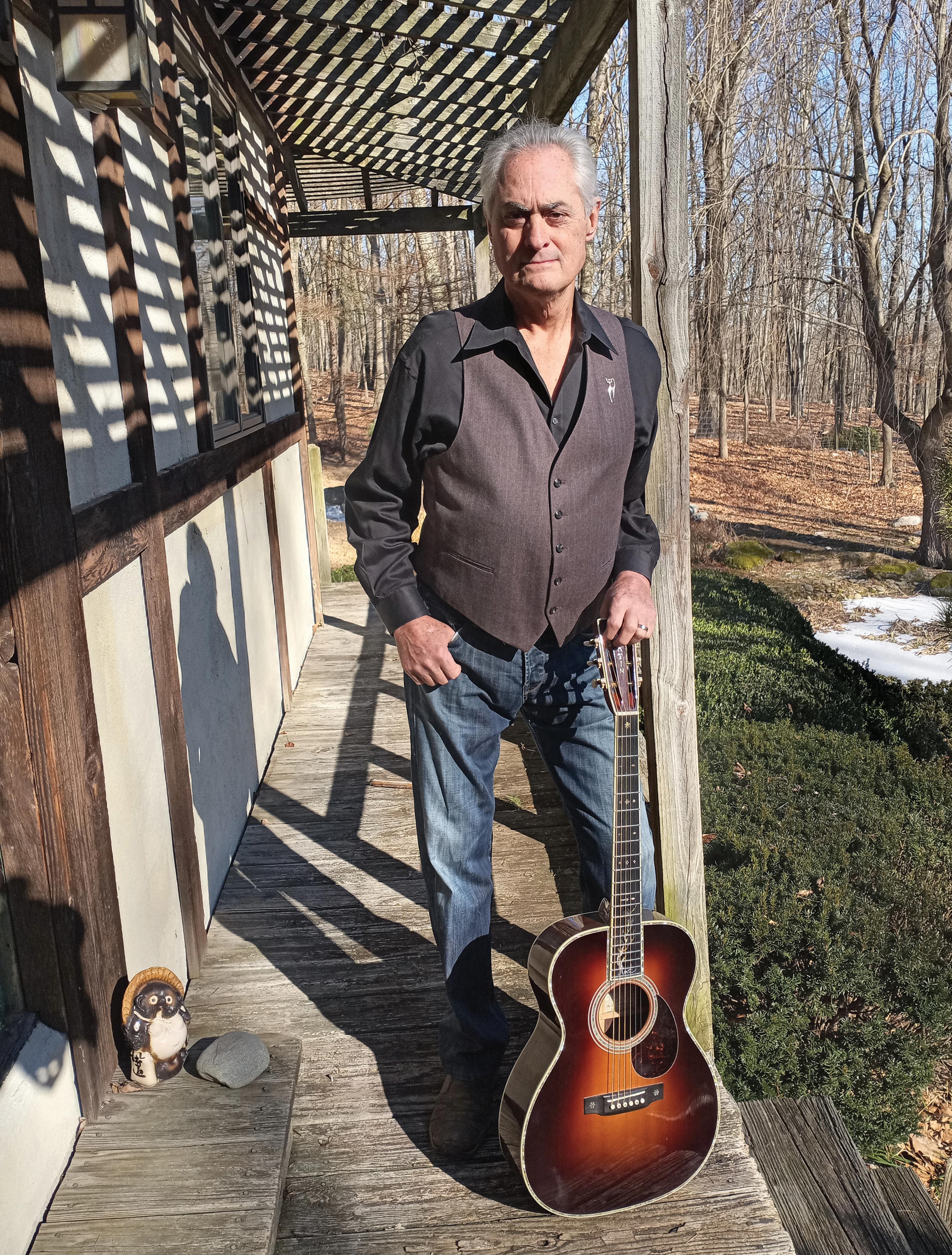
Sweet harmony is gone
My eyes envision all the ways Your soul knew they could sound.
Your spirit soars above me now
To freedoms never known
A place where once again we’ll meet Where love will feel at home.
I breathe the ups and downs of life
Take air to carry on
To leave a mark upon this earth
Your inspiration found. Amy
30
For Martin
Photo by Amy Bridge
Aries (March 20-April 19)
The Sun's journey through Pisces is often a mysterious time for you. Keep your attention focused on the interior world as much as you can: quiet time, minimizing external commitments and even taking it easy on your own to-do list. The soft, spacious, colorful world of your imagination is calling you, and even if you are needed by someone every day, make sure that every day you take time to yourself — the more the better, whole days if possible.
Taurus (April 19-May 20)
I've noticed that a great many people are experiencing digital burnout. This is an excellent time to consider the true meaning of friendship. While this word has become coopted by "social" media, when are you someone's friend? It's often true that we love people for what we do for them, more so than what they do for us. This would be an excellent moment to consider the generosity of those who serve you and are aware of your needs — and who actually help.
Gemini (May 20-June 21)
You've been in many situations where you knew you needed to make a decision but deferred to someone else's influence. Often people are quite old before finally take up their own power of decision. There may be a diversity of smaller issues that are distracting you and that seem much more central, urgent and necessary to address. This may come down to whether you feel like you're in a position to say something because you're afraid of the effect that it will have. You're not usually the type to be silenced, though only you can silence yourself.
Cancer (June 21-July 22)
Now you have the most room to maneuver; where you can sense your future; and where you can allow yourself to dream of what is possible when you get out of your own way. While at first, this may have the feeling of dimming or curtailing your idealism, you will benefit from taking a more grounded and realistic approach to what you want. While "planning" does not have such a good track record, it can be helpful to take a structured approach to your agenda, making the best use of your time.
Leo (July 22-Aug. 23)
You have been through a test of your relationships, and your attitudes and values about them so many times in the past three years, that there is no commitment possible that does not emerge from a deep place within you. This is the time to consolidate your learning; distill and remember what you have learned. I recognize this may have been a time of isolation, and of relationships seeming to fall away, fail, or have their purpose entirely redefined. It's been a long road deciphering and seeking an understanding of the nature of commitment.
Virgo (Aug. 23-Sep. 22)
Saturn in your opposite sign is a long-term transit lasting a couple of years that will help you sort out fact from fiction in your relationships. You will be a lot happier when you can step away from idealistic visions of what should be, and start with the basics of what your life is about day-to-day. Your idea of love and companionship needs to reflect your actual world. It's possible to build, but only on what is real and tangible. It is possible to make changes, if you start in the present. And it's possible to have help if you know the help you need.
Libra (Sep. 22-Oct. 23)
The slow, steady approach to what you want to accomplish remains the best one to take. Work slowly and persistently enough to appreciate what you're doing, rather than having
to rush or conduct yourself under pressure. Stay ahead on whatever you can and that will ease your sense of urgency. While you can certainly perform when the screws are on you, this is not your ideal mode of existence. The key thing here is your creativity, which works best when you're flowing rather than pumping.
Scorpio (Oct. 23-Nov. 22)
You need situations in your life where you don't have to be the one in control. And that does not amount to being controlled. It really amounts to stepping back from psychological analysis and into the space of allowing, including allowing yourself the space to breathe and flow. It's true that you're about to enter a much more disciplined time in your life, where you will need to set better boundaries on your emotions, your space and your time. For now, appreciate the experience of overflowing your own shores and fertilizing the flood plain
Sagittarius (Nov. 22-Dec. 22)
You have lived on a set of assumptions for a long time, and you may be in the first stage of questioning whether they are true. You don't need an answer now, you only need to define a few central issues, most of which relate to how you feel from day-to-day. If you are feeling focused, motivated and 100% can-do, the more power to you. Just be certain there is not something you are neglecting, particularly on the home front, or as relates to a certain mystery in a relationship.
Capricorn (Dec. 22-Jan. 20)
Your preferred method of contemplating reality is to gaze at the ocean, re-pot your plants, or take a walk — and not think about that thing, and then you get your idea. The mental approach best suited to your sign is intuitive and creative. This is why you can find solutions to problems that nobody else can; you come up with something that has not been tried before, and which may even work. Yet once you have your concept, you are all set. This is the thing to remember. Particularly where writing or even public speaking is concerned, once you have just one really good sentence, the rest follows naturally.
Aquarius (Jan. 20-Feb. 19)
When the Sun is in Pisces, that's your opportunity to pull some focus on your priorities. While the 2nd place (or house, for you, Pisces) is usually regarded as the house associated with money, it also includes self-respect, what you hold as important, and the order in which you attend to challenges. While the past five years may not have exactly been anarchy, I am sure you would like greater power to put first things first. That implies knowing what they are, and de-prioritizing certain other matters or tasks which may seem important. You can afford to take this at a moderate pace, however. There is a whole new world arising, so keep your eye on the horizon.
Pisces (Feb. 19-March 20)
It's always a great relief when the Sun enters your sign. For all the world's oceans, this planet is an alien place to most people born under the sign Pisces. The conflict, the refusal of so many people to help when they could easily do so, and many other facts of life here constantly remind you that you're a kind of visitor to an alien planet. And yet you're here, and you're here now. You will benefit greatly from the structure that Saturn provides, and will continue to offer throughout the rest of Neptune's journey through your sign. Saturn will give you something you can climb up on and appreciate the view — and many other practical resources that will help you manage your time and energy.
Read Eric Francis daily at PlanetWaves.net.
Signs Planet Waves by Eric Francis 31


















 -Michelle Oram
-Michelle Oram

































































